Cycling Smarter: Smart Bike Trainers and Apps to Take Your Training to the Next Level
If there is one thing that a global pandemic taught, it is that everyone should have access to quality exercise at home.This trend is expected to continue in 2021 and beyond.
The’smart bike trainer’ was a gradual development.Although the phenomenon has been steadily growing for many years, a pandemic in the world really kicked it into high gear.The wait times for new smart trainers reached three months at one time, and Peloton’s stock price shot from $19 to $91 per share.
Why is this so popular?A turbo trainer that can connect with apps like Zwift and Peloton creates a completely new indoor cycling experience.This new technology is a gamechanger for those who train and ride indoors at least part of the time.
We could write a piece about smart bike trainers and another on all the apps that are available for smart cycling workouts.We decided that it would be most helpful to our readers if they were all included in one article.
Our heads started to spin when we began a roundup of the market for smart stationary bikes and smart turbo trainers.There are so many options, and so many?if-then? statements.It can be overwhelming to consider all the options and all the?if-then? statements.We will do our best simplify everything.
Let’s get to the point: Which Smart Bike Trainer Is Best?
Model
Why We Love It
Best for?
Check Price
Saris H3

A reliable and durable trainer for riders that can withstand any kind of abuse.
For cyclists who require a reliable trainer, they will need one that is heavy-duty.
Wahoo Kickr
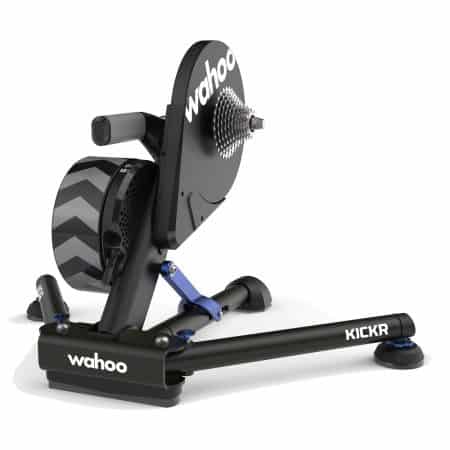
The H3 is a great all-round choice.Always moving forward
Riders who are looking for a reliable trainer. Wahoo loyalists.
Tacx NEO
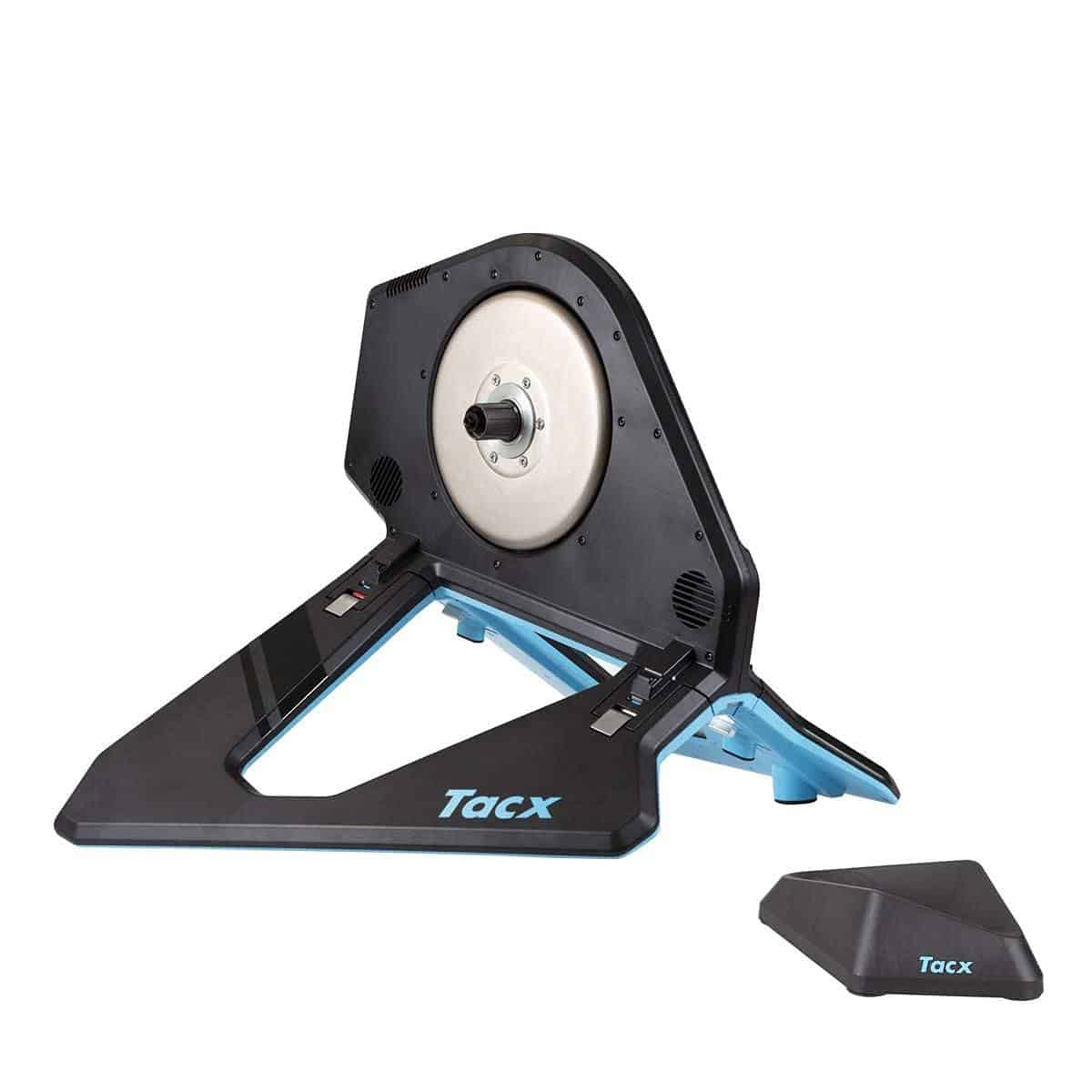
We tested the quietest trainer, with all the bells & whistles.
People with a healthy financial plan who value a quiet trainer.
Peloton

High level of interactivity; workouts suitable for all fitness levels.
Even if they aren’t cycling junkies, fitness enthusiasts can still enjoy the sport.
Tacx Flux 2
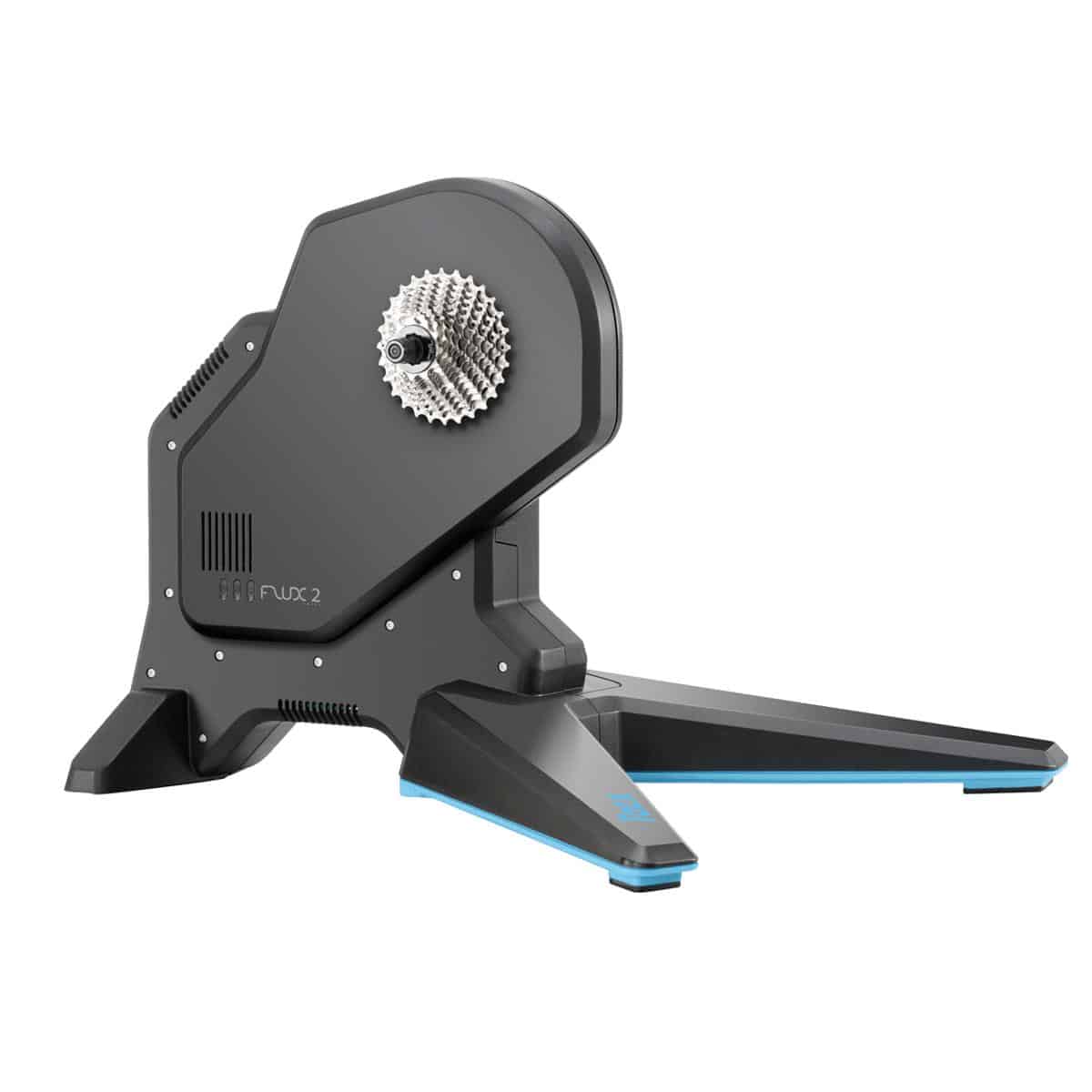
Amazing value for money. Best budget buy.
For those who don’t want to spend 4 figures on a trainer.
Wahoo Snap

If you can’t do a wheel-off option, this is the best wheel-on smart trainer.
For those who need a trainer with wheels.
Next, some definitions
What are Smart Bike Trainers?
A bike trainer, also known as spinners or turbo trainers, has been an important tool in off-season and interval training.Simply place your bike on the rack, secure everything, and then pedal away.The?smart’ part is the?The smart part is the twist.Smart trainers are those that allow your speed and power directly to interact with the app or program you are using.The app will know when you are cycling harder.The trainer will know if your course requires you to climb hard.Smart stationary bikes can also be used in place of a trainer, for the purposes of this article.
Smart trainers are often ‘driven?The chain is connected directly to smart trainers.Bike trainers of the past were driven by a tire contacting a roller. This creates friction but also a variation in the pressure depending on how high the tire is.Direct-drive smart trainers have the rear wheel off the bike, which allows for a more direct transmission.
Smart trainers can be quite expensive.About 3x as expensive as regular trainers.They are more expensive than regular trainers and require a more complicated setup process.If you plan to ride indoors for a long time,?Like in the winter months?They can be amazing.
What are Smart Cycling Apps?
A streaming training app is an example of what you can see.
You almost always use an app when you have your bike on a smart train.You can use an?app? to control your bike.You get the full interactive experience.Smart cycling apps allow you to interact with the workout via live streaming or program.You could have your stats streamed to a coach in another part of the world or your trainer responding to changes in the course.You could also be?virtually’ there.You could be riding alongside your friend.Who happens to be located 3,000 miles away?This is what many people find the most important.The ability to connect with others and ride with them in a group.Even avid cyclists have been known to move their training indoors to a smart trainer, so they can avoid dangerous roads and still ride with friends.
Smart Trainer App Examples
Zwift and Peloton (which are a bit different, we will discuss more), Sufferfest, Rouvy and Trainerroad are just a few of the apps you might have heard about.We have spent time on each one so we understand how different apps react to different trainers.
We will be covering more apps below. If you need the crash course on apps, continue reading the smart trainer review section.
We also did a deep dive into the four most used training apps. If you are serious about getting one, make sure to check it out.You will need to subscribe monthly.They typically require a monthly subscription.
A smart trainer is not necessary if you don’t intend to use an app.Instead, you can set up your bike on a regular trainer and save money. You can also watch training DVDs or streaming videos.
How much will this setup cost?
This is where things get complicated.You can spend little or a lot.
The upfront investment for a smart trainer can range from $600 (assuming you have your own bike) to $2,200 for a stationary Peloton bike.You can also set up a non-smart trainer so that it provides feedback.However, you will not be able to reap some of the benefits that come with both-way communication.We recommend that you don’t buy anything older than one year to enjoy the most recent technology. Engineering is moving so fast right now, it’s hard to miss out on some of the two-way benefits.
The streaming apps or programs, in order to be fully compatible with trainers, will also have a cost.The monthly cost ranged from $10 to $40, according to our experience.This is a significant savings compared to the cost of spinning classes at a gym.Sufferfest and Zwift are two popular examples.
We didn’t want to stream everything from an iPad or phone, so we invested in an AppleTV device that allows you to stream any app to any TV.This cost about $170.
We will also discuss some other things below.These two are the biggest costs.Choose a trainer and a streaming program. Make sure they are compatible.
Why would I use a smart trainer?
This one is simple.Smart trainers allow you train on your bike, rather than a stationary or gym bike, in the comfort of your own home.You can feel safe and secure.You can do it from your home and in a fully connected manner.The most common situation is for a cyclist to ride their tricycle or road bike in winter and in colder areas.We also see riders who are tired of dealing with traffic or who are hesitant to ride in rush hour or in low light conditions in the morning or evening.
One avid cyclist, a multitime Ironman triathlete, told us that after her second collision with a vehicle on busy Southern California roads, she decided it was time to move inside for her roadbiketraining.She loved riding outdoors, but her area was becoming too crowded and the roads were just getting too busy.
We hear from cyclists who love the fact that they can add precision to their rides due to the constant inputs of feedback on power, speed and other metrics.It is difficult to do a wattage-based training session if you don’t have a power meter or a bike computer.Interval training is much more scientific when an app continuously measures your wattage in real-time.
The gamification of apps makes indoor rides more entertaining and fun than ever before.Zwift, Rouvy and others use gamification for indoor riding.Take a look at our roundup of apps for deep diving.
Review of the Best Smart Bike Trainers
We like many smart bike trainers available on the market today as well as some higher-end smart stationary bikes.Here are some of our favorite smart bike trainers:
Saris H3
Best All Around for 2022
CycleOps has a new name, Saris. This is a brand we have loved for many years.The company, which also makes power meters, has consolidated all its branding under the Saris brand.We love the Saris old-fashioned bike trainers on the market.Don’t let this fool you.Saris has adapted well to the smart trainer market.
The Saris H3 smarttrainer is a favorite of ours, especially when you consider the price.
Although it isn’t the best-selling trainer on the market, the Tacx Ne 2T is our favorite option. The H3 is also not the most affordable smart trainer (the Tacx Flux 2 costs about $100 less than the H3).The H3 is a solid trainer that has a big flywheel, great stability, and firmware that makes it easy to connect to your smart training app.
We applaud the company for their latest model.The H3?Much quieter than the previous models.The old H2 model was noisy and we couldn’t give a full endorsement, even though it was a great bike.Saris solved it and we are grateful to them!According to the company the H3 is five times quieter that the H2.We love that the flywheel and other moving parts have been hidden, making it safer for pets and young children.
The firmware is what we love most about the H3.The trainer can quickly pick up a Bluetooth signal and integrate your trainer with your application. It requires very little to no software knowledge.It happens without much effort, which is exactly how it should be.We love the stability of the bike, thanks to its wide, adjustable base.This is especially important for riders over 200 pounds who may be doing heavy workouts, standing, or rocking the bike side-to-side.A good cycling mat under any unit will help with the rocking.
We wish it came with a rear sprocket like other trainers. This is because for many cyclists who don’t know how to fix bikes, it will be the most difficult part of the setup.Saris has now solved the “whine?“This model is now a cut above Wahoo in our rating.This model is the best choice for those who value performance and value.
Wahoo Kickr?Example of a direct drive setup.
Wahoo KICKR
The Tried and True
KICKR’s latest generation adds a feature called “Axis Feet?“The 2021 version of KICKR will allow the bike to tilt or sway up to 5 degrees side-to-side.This will give the rider a more road-like experience.This is not quite up to the standard of old-fashioned rollers but it is an improvement over the rigidly-fixed trainers of the past.
If gadgets are what you are looking for, Wahoo has the gear-junkie covered. If you really want to get setup on Wahoo, you can add theWahoo Climb( found here) on the front of your bike. When coupled with the Kickr in the back, you can simulate real hill experiences incredibly well. The Climb will give you 20% incline on uphills, and 10% decline on downhills. We were skeptical at first, when these initially hit the market, but we have tried the Climb and like it. Others describe it as a “gamechanger.”
The KICKR is unique in that it comes with the cassette already installed.This is kind of nice.
We were told that the KICKR’s early models had some technical issues, particularly with the firmware. However, the latest models seem to have eliminated these problems.The KICKR has one drawback: the flywheel can heat up and is exposed, which is a problem for anyone with young children or curious pets.We recommend that you purchase a Wahoo through a larger retailer, just because there are some people who don’t like them.
KICKR: One noteWahoo’s maximum weight rating is 250 lbs.If you are a heavier rider, keep this in mind.

Peloton’s indoor bike has received rave reviews.
Peloton
The Best Smart Stationary Bicycle
Peloton’s stationary bike is smart as can be.Peloton’s proprietary stationary bike is as smart as they come, as long as you also use the $40 per month Peloton subscription service.The carbon fiber frame is stiffer and more responsive than what you might expect from a stationary bike.We love the bike’s quietness. This is because the frame, drivetrain and friction point are all made by the same manufacturer.The 4?The 4?The footprint is much smaller than you would need, especially if you consider the length. And the build quality is outstanding.The screen is part the bike and is large considering how close it is.The bike costs $2,245, which is not cheap considering it can’t double as an outside bike.
TACX Neo 2T Smart
Quietest and Best Overall if You Have the Budget
The Tacx Neo 2T can mimic many types of road surfaces and can measure power upto 2200 watts. (And if you need that much power, you should be training to compete in the Olympic games.Although the accuracy of the power measurement is slightly higher than the Kickr’s, they are so close that you will still get excellent data output.The Neo Smart footprint is slightly wider than the others, which can be a good thing if you are pushing the bike uphill and applying side-to-side torque to the frame.It is compatible with all the apps we have reviewed (12 total), with the exception of the Peloton subscription.Although it is more expensive than the direct drive models from CycleOps or Wahoo, it has the reputation of being the quietest.It is almost silent.Garmin acquired TACX in 2019, so we expect
that the level of integration will only increase as these two companies combine their know-how.
There are many other bells and whistles, but it is too much to list. Check out our review.These include a light that shows how much power you are producing and the ability to have side-to-side flexibility, making it feel more like a real road bike.It can also be used without a power cord.It generates its own electricity
Tacx also offers the Flux 2 or Flux S for those who don’t want to spend $1,400 on the Neo 2T. We love the value of the Flux 2.
The TACX smart trainer is the most expensive (except for Peloton), but it is definitely worth a look for anyone with a budget of less than $1000.It is a stunning unit.We were blown away when we rode the most recent model.
Tacx Flux 2
A great value, but still a high-end smart trainer

Tacx may have won this year’s award for best overall value.This setup will still cost you nearly $1,000, but it is a great deal for the value you get.
We love the Neo 2T from Tacx, but the Flux 2 offers some of the same functionality at a lower price.Although the flywheel is smaller than the Neo 2T, it will still provide enough resistance to handle sudden climbs and intense ERG-mode workouts.
The Flux 2 is quieter than its Neo 2T sibling.
Wahoo KICKR Snap
Best-On Smart Trainer

All that being said, we think it is fair to compare a wheel-on and wheel-off model.
The snap is a great trainer that allows you to ride with Zwift and Trainerroad. It also comes at a very reasonable price.The all-in package costs about $500, which is much less than what you would pay for a good direct-drive model.We wanted to make sure that everyone has a wheel-on model, even though we recommend that you get a direct-drive model if you have the budget.
The KICKR Snap excels in noise.It is quieter than most direct-drive models we have reviewed.This is not a problem if you have a quiet workout area, but it can be a benefit if you’re trying to ride while your baby naps in another room.It is stable and built well, and approximately 10 pounds lighter than trainers with direct-drives.
You might wonder:You might ask, “Why would you not buy this if it is half the price of direct drive models?“There are several reasons.Direct-drive models are more precise in their wattage measurement and more responsive to changes in effort or tension, as they get feedback from the app.Direct-drive models also allow you to reduce the variable of your tire. A high-pressure tire will create more resistance than a lower PSI tire.If you are using a trainer tire, you will need a tire that is lower in PSI.Due to the heat generated, a wheel-on trainer can quickly wear down your rear tire.Because of the larger flywheel, direct-drive models are usually more responsive and stable.The best direct-drive models will be quieter than wheel-on models.
Others
There are many smart trainers available on the market.We recently reviewed the Elite Suito from Elite, an Italian company.We are getting more and more from this manufacturer, and plan to give them a deeper look in the next year.
Review of the Best Smart Cycling Apps
Once you have your device, it is time for you to search for the right program or application.This market has seen a lot of progress in the last couple years. It has also been the recipient of some major investments.Here’s a summary of the apps currently on the market (Editor’s note: We recently did a head to head comparison of the four most popular apps on today’s market, here).
Zwift
Zwift & Sufferfest are gaming-oriented rides.
Zwift was launched a few years ago and has since gained a loyal following from serious cyclists as well as intermediates.The app-based software runs on either an apple or pc device. Once you download the app, you can subscribe to the $10 per month software.
Zwift offers a unique interactive gaming-style experience.You can compete with other cyclists around the globe who are following the same route as yours. You can also experience the climbs ( , they have some good ones), and the descents as they occur. You can even choose which turn to take at different forks on the road.
Many rides are offered based on a limited but growing number of locations (London Richmond, Austria and Watopia), each one inspired by actual routes or (in Watopia’s case) virtual islands.You can ride the routes against or with people you don’t know, or have friends accompany you. You can also opt for group rides, events, or rides that are often set up on an adhoc basis.Interval training and free rides are also available, making it accessible to all.It works well with the Magnus, Kickr or Neo Smart trainers.
Zwift is the best app that integrates with Apple TV.This is a huge plus for us and makes it so easy to use.
Zwift uses pure gaming to deliver the imageryIt looks like you’re playing a videogame.You will see other riders riding the same course as you. They are real riders from all over the world.This is cool, but if you prefer real-world footage of riders, Sufferfest may be for you.Zwift is an excellent app that we highly recommend.
Sufferfest
This is a great name to use for a cycling app.We love Sufferfest because they think beyond cycling.The coaches behind Sufferfest are primarily cyclists. However, they also focus on streaming strength training and yoga workouts. This is something we have come to realize as we get older that is essential for maintaining our health in triathlon and cycling.They can stream more than 1,000 different workouts, as well as a more casual ride with friends.We have seen Sufferfest grow to be a cult-like following among the cycling community over the years.The greatest contribution Sufferfest made to the world of cycling was 4DP (Four Dimensional power), a new baseline power measurement that takes into account many factors and not just Functional Threshold, which has been the standard for
years.Sufferfest may be right for you if your goal is to get great workouts and not just to have a large community of riders.
Although the Sufferfest app doesn’t currently integrate with Apple TV, it does have one advantage: you can use it offline more than any other options, provided that you have downloaded the workouts to the App.If you’re looking for coached interval training, Sufferfest is the best option.
Sufferfest is emerging as a viable alternative to Zwift and Peloton.
Trainerroad
Sufferfest is not complete without mentioning TrainerRoad.TrainerRoad, like Sufferfest provides structured workouts that can be used with any of the smart trainers.It was created in Reno and is a product of the spin class industry. However, it adds structure to your workouts.Trainerroad requires you to take an FTP test before you start (they point out that they were the first to baseline this way).They offer more than 2,000 workouts.You can search for the type of workout you want and base it on duration, intensity, or both.Although we couldn’t find any published workouts for Zwift and Sufferfest, it feels like there are at least 2,000 options.
Trainerroad offers in-workout messaging that reminds you what to concentrate on and why a particular interval is important.The messaging is very helpful and has helped us improve our cycling technique as well learn a lot about the physiology of cycling.We love the ability to adjust the warm-up and cool-down of any workout by simply tapping the screen.
Trainerroad offers road workouts, which are great for those who ride outside.However, when riding on roads, we prefer to ride as hard as possible, rather than doing intervals.It is an option for some.
Peloton
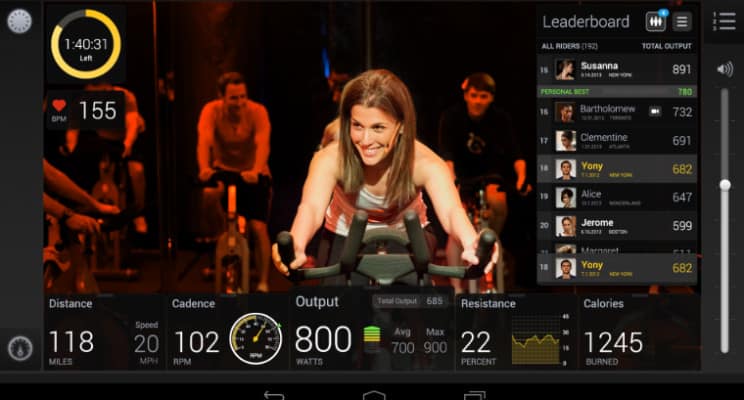
Peloton’s claim to fame is streaming live spin classes.
You can also do the Peloton classes or rides if you have the Peloton bike.Peloton has more than 500,000 subscribers. The $40 per month fee allows unlimited streaming of group rides and classes.The instructors can then view your riding and call you out, in some cases as if they were there.A leaderboard allows you to compare your performance to other riders in a similar fashion to game theory.This is a great option for those who a) can afford a Peloton bike and b) want to ride in a class. Classes are available at any time that suits you.You can also stream the classes online without the integration. However, this is a more expensive option that we feel sacrifices too much of what the class offers.It is up to you to decide if it is worth being locked-in to Peloton.Hardware and software?
forever.
It is a topic of constant debate in our cycling circle. Is Peloton worth itEveryone will have a different answer.
Tacx
Tacx is a little further back in terms of momentum.Tacx, an app-based system that doesn’t require any hardware, is more like Zwift than Peloton.It can be used with any number of bike configurations.It is compatible with the Tacx trainers and other 3 party trainers. The interface allows you to ride famous tracks or rides around the world.You can also ride based upon the GPS coordinates you enter. This is useful if you want a ride to prepare for.You will need an Android or Apple App to use it. However, the rest of your data can be stored on the internet.The app is free and the workouts are currently free. This is the only option among the three that we reviewed without a subscription.
Other notable subscription services include Kinomap and Trainerroad (we have heard good things about this one but have not yet reviewed), Skuga, Sufferfest and BKool.While each has its merits, the three mentioned above are our top choices right now.This market is hot and growing fast, so this could change quickly.We will keep you informed about our reviews.
How they fit together
When you look at the various types of technical equipment and mechanical equipment, it is easy to wonder how they all work together.You have a few options for setting up your home training system. It all depends on the equipment you purchase.
| App / Program | Recommended Compatible Trainer | Display Method | Cost |
|---|---|---|---|
| Zwift | Saris H3, Wahoo Kickr, Tacx Neo Smart | Stream on your tablet, laptop, or Apple TV | $600 - $1,200 trainer, $15/month subscription (plus cost of a bike) |
| Peloton | Peloton Bike | Integrated screen on bike | $1,900 Bike, $39/month subscription |
| Tacx | Saris H3, Wahoo Kickr, Tacx Neo Smart | Apple or Android app on tablet or phone | $900 - $1,400 trainer, $15/month subscription (plus cost of a bike) |
You might consider a tablet holder for your bike if you plan to stream your workouts from your tablet or computer.This will allow you access the audio and video at a close enough distance to fully experience the data and instruction provided by the system.You might also need some amplification to the speakers. Otherwise, the sound could be muffled by your trainer or bike.This is especially important if you are teaching classes or coaching.
How to set up a smart trainer with an app
We used the CycleOps H2 with Sufferfest and Swift apps as our example.
The setup of a smart trainer hardware is slightly more difficult than that of a traditional trainer.The smart part is what you don’t need to worry about.It will locate your bluetooth and wi-fi with minimal effort from you.
We wanted to replace the cassette on our trainer.It didn’t come with a cassette. This meant that there wasn’t a rear wheel sprocket for attaching your chain to.We had two options: either remove the cassette from the bike and place it on the trainer or install a new cassette.We chose the second option because we know that once we have a cassette setup we like on our high-end bikes, it is difficult to change it.
We ordered a basic, but reliable Shimano 11-gear cartridge. It fit perfectly on the H2, provided we removed a small ring from the shaft.Although the installation was easy, if you don’t have a lot of tools for your bike, you will need a cassette lockring device.It doesn’t hurt to have one if you don’t already have one.
Once the trainer was set up and the bike mounted, it was time for the trainer to connect with the app.The fact that we wanted the app to work on a full-sized TV and not an iPad or a phone made this a bit more difficult.It was simple to sign up for the Zwift App.It was easy to connect Zwift with the H2.All of this was done on our smartphone.We will continue to test other apps, such as Sufferfest or Peloton. But we believe it will be very simple for everyone.
It was a question of how to get it to appear on the TV.After evaluating all options, we decided to spend the $150 or so on an Apple TV.The Apple TV isn’t really a TV. It’s a small device the size of a steak and allows you to stream any app directly to your TV.We downloaded Zwift to our Apple TV device and within minutes, we were watching Zwift while cycling and all the things were talking to one another.
Apple TV is our preferred solution, provided you have an Apple iStore Account.It can be used to stream other streaming features, such as the cycling app, and reduces the need for you to plug your phone or tablet into the TV.It is not a service fee, but a one-time investment in hardware.Zwift is currently the only one with an Apple TV app.Mirroring will be required to display the app on your tablet or phone.It is not the end of the universe, but it will limit some functionality and consume some bandwidth.
The apps can be streamed from any device, including a tablet, a smartphone, or computer.Most riders do.It works well, but you will need a larger screen to be able read some output numbers or other notes that might be difficult to read on a phone.
Connecting the smart trainer to the apps is quite simple.You don’t need to do anything other than start pedaling.The app will locate the trainer or the app will find them.We aren’t sure.We do know that this part was easy.
How does it know how hard it is to make my rides?
Smart trainers allow you to be more precise with your rides. However, to get the most out of it, you’ll need to do a baseline type of ride on every app you use.This should be your first step. Take your app’s FTP or Power baseline test.
Apps such as Zwift or Trainerroad use a Functional Threshold Power test (FTP), while Sufferfest uses its 4 Dimension Power (4DP).The 4DP test tests your power in different situations.The app then uses this baseline to create your training plans and rides.
ERG mode is also available on most apps and trainers. It takes some getting used to, but it can be very useful.We’ll be discussing that later.However, it is important to know that any app that allows you to track your power should also allow you the ability to establish a baseline. This baseline can then be used for future workouts, regardless of which smart trainer app you use.
What is ERG Mode on a Smart Trainer and how does it work?
ERG mode adjusts resistance so that you don’t have to.ERG stands for?Ergometer?. It is a device that measures total work output.Imagine that your training plan requires you to produce 300 watts.Instead of shifting and pedaling harder the trainer will calibrate so that you are putting out 300 watts at any given moment.You don’t have to shift.
ERG mode is a nice way to remove the shift from the equation. However, if you’re used to traditional trainers, it may feel strange at first.ERG mode works best if you pedal at a steady pace.80 rpm is the minimum.It might cause problems in ERG mode if you pedal slower or have lower gearing.
ERG mode is my preferred mode for any type of structured exercise, but not when I’m doing a course like Zwift.
Smart Trainer: How to Convert a Traditional?Dumb?Trainer
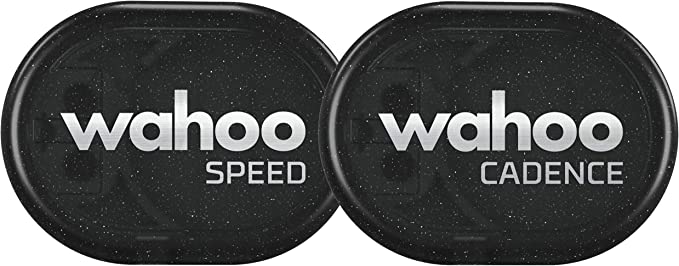
Bluetooth sensors from WahooThey are not required for most setups but we like their reliability and ease of use.
You have a plan B if you have a limited budget but still want a regular trainer for your bike and a bike you like.It won’t give you the same experience with a smart trainer. We recommend at least reaching the $600 Magnus (shown below).We understand that people want to save money.Here are some ways you can enjoy the interactive benefits of your dumb trainer.(We really hate to call them dumb).They are amazing little pieces of equipment that have greatly helped us in our cycling.
- Buy an ANT (Bluetooth Bike Speed and Cadence Sensor).This part would be attached to your rear hub or in your wheel.It will cost approximately $35 for a basic model, but we recommend a simpler version.
- Buy an ANT stick that can be stored in your USB drive.If you have an iPad or iPhone, make sure you have a bluetooth-compatible sensor.The cost is approximately $25.
You can pair the sensor with your phone, tablet, or laptop to get a reading of your cadence and speed. This is done by performing a functional baseline test after you have set it up.It will also give you instructions on how to use the app or program.It will not provide a full experience, but you will still be able to interact with the trainer or bike in a two-way manner.
What to Look For in a Smart Trainer?
There are a few things you should look out for when making a big investment in your indoor cycle or smart turbo trainer.These are our top tips.

Simple iPads are the key to streaming workouts from Zwift or Tacx.
Do You Want to Ride Your Own Bike or an Indoor Stationary Bike. This is the first question you should ask.A trainer is a great option if you already own a triathlon bike and plan to use it as your training platform throughout the year.You can choose between the direct-drive and wheel-on versions. However, you will save money on the setup and build your conditioning on the bike you intend to race on.Your trainer can be used to check if your adjustments are working, but in a safe setting.A stationary indoor bike is quieter and takes up less space.You can also store your bike indoors, whereas a stationary bicycle will take up space.
Are You Looking for the Peloton Community. With Peloton’s huge push into the market in the past few years after receiving major investment, they have created a large and dedicated community.This community can be enough to motivate people.Zwift isn’t far behind, but it doesn?t have the loyalty or dedication of the Peloton users.You might consider the Peleton route if you value that type of coaching and community.
Vendor Considerations.When it comes to the programs, workouts, or apps you intend to stream, think about the vendor who is providing them. If you go with Peloton, which hundreds of thousands of people have, you will be “locked” into them for your hardware, equipment, and future subscription. If they decide to raise the subscription fee by 50%, there isn’t much else you are going to be able to do with your Peloton bike other than pay the fee. Also, we think it makes sense to go with a company who is showing signs of growth and strength, so you can be sure the workouts you decide to do and the community you join will be around for a while.
Do you Like Live Classes? Or structured workouts?Peloton is the best option if you want to ride in a group with a coach.This is what they are well-known for.Both Zwift and Sufferfest allow you to ride through scenic areas, but Zwift will use gaming technology and interfaces.Sufferfest offers more ride footage.Zwift has the advantage when it comes to group rides with other people.If you’re looking for structured, coached workouts, Sufferfest is still the best.Unless you prefer to use the old-fashioned DVDs. In which case, we still love Spinervals.
What’s your Budget? Each option has a two-year ownership cost.The Peloton requires you to purchase the $2,000 bike, have it shipped for $250, and then subscribe for $480 per year.You can get it for $3,210 after two years.You can also get a smart trainer for $600 and a trainer tire for $35 if you own a bike. Then, subscribe to a $10 service for an additional $10.If you already have the tablet or laptop you will use to run the program, the cost would be about $950 over two years.You would still get quality workouts, and a significant savings.
